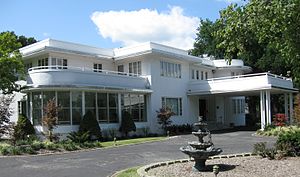
Image via Wikipedia
Audrain County is full of hunting attractions. It is a quiet county resplendent with spectacular naturist views. Located in the U.S state of Missouri, Audrain County was formed in 1836. Named after Col. James Hunter Audrain, Audrain County is flanked by counties such as Monroe, Ralls, Pike, Montgomery, Callaway, Boone, and Randolph.
Audrain County Historical Society is a famous name. Located in the Robert S. Green Park, there are some museums located here. They are namely Graceland Museum, and American Saddlebred Horse Museum.
Graceland Museum is considered to be a historical museum nationally. It was formerly a mansion which was then converted to a museum. During the American civil war, Colonel Ulysses stayed here.
Visitors can see the beautifully dressed rooms in this mansion-museum. Victorian architecture is in vivid display, and the architecture still resonates the beauty of the America’s rich history.
The American Saddlebred Horse Museum is dedicated to Graceland. It exhibits rare and unique pieces that will capture your attention and interest.
At Audrain County, and at the Audrain County Historical Society is located the Country School. Placed among lush settings, the school is a cute cozy outfit in the middle of picturesque settings. Constructed in the early part of the nineteenth century, the Country School reflects the olden day school building architecture.
In the same vicinity is the Country Church. It was built in the 1800s. This is a trans-located church. It was brought to the Audrain County Historical Society premises part by part before re-building it here. The church is beautifully set amongst serene settings, and is a must visit for new visitors at the Audrain County.

